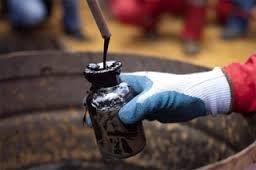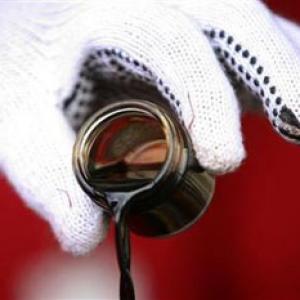A number of factors will influence the medium- to long-term dynamics of oil prices, notes Subir Gokarn
 Oil prices have played a huge part in global economic dynamics over the past several years.
Oil prices have played a huge part in global economic dynamics over the past several years.
They rose sharply in the couple of years leading up to the financial crisis of 2008.
They crashed during the crisis, but recovered quite quickly.
In late 2010, they surged past the $100-a-barrel mark and, with a few, short-lived exceptions, remained above it until about September 2014.
Since then, they have fallen quite sharply and, although they have been volatile, seem to have settled below the $60-a-barrel level.
India’s macroeconomic situation has benefited enormously from this decline.
It has increased space for monetary and fiscal stimulus and reduced vulnerability on the balance of payments front.
From the fiscal perspective, falling prices encouraged the government to decontrol diesel prices.
The commitment to this was tested once, when an increase in crude prices was translated by formula into retail prices.
So far so good, but now policymakers need to address some questions. Is this relatively benign price scenario going to persist? And if it doesn’t, what needs to be done now to buffer the economy from another surge?
A number of factors will influence the medium- to long-term dynamics of oil prices.
The analytical construct that helps us put these together is the long-run marginal cost curve.
Simply put, it ranks in ascending order oil reserve pools that are increasingly costly to exploit.
Amongst known reserves today, the cheapest to extract oil from are the onshore reservoirs in the Persian Gulf and West Asian region, with an average cost of $27 a barrel, but going as low as about $10.
Russian reserves are extracted at an average cost of about $50 a barrel.
North American shale oil averages about $65 a barrel, with a floor of about $50.
Obviously, when prices were at their levels of the 2010-14 period, virtually all known reserves were profitable to exploit and investments in both exploration and production were attractive.
At today’s prices, somewhat below $60, North American shale has clearly become less remunerative.
The logic of long-run marginal costing indicates that, first, new investment in unprofitable capacity stops and then, existing capacity that is now unprofitable shuts down.
The most visible impact of the recent decline is on shale capacity. Rigs extracting shale oil have declined by about 50 per cent from their peak level of over 1,600 in October 2014.
This rapid decline over a short six months indicates that it is relatively easy to shut shop in this business; conversely, with rigs lying idle, it would be just as feasible to rapidly re-activate them.
However, the longer the current price situation prevails, the more difficult it is likely to be to bring the various resources back together.
One possible scenario based on these considerations is that the average cost of extracting shale oil, about $65 a barrel, will impose an effective ceiling on prices; if they rise above this level, shale reserves will come back into the market. This is a reasonable projection as long as the idle shale rigs are still on the bench, ready to be re-deployed at short notice.
The question is: how long will this situation persist? It presumably cannot do so indefinitely; the longer that shale oil extraction stays unviable, the more difficult it is going to be to re-activate extraction.
Based on this analysis, crude prices should remain at current levels for as long as shale re-activation remains a credible threat. It is difficult to be precise here, but somewhere between a year and two may be a safe assumption to make for policymakers.
Are prices likely to surge beyond this horizon? There is no unambiguous answer at this point.
On the one hand, long-run marginal cost analysis suggests that production will converge towards the lowest cost producers, which, as indicated above, are concentrated in the Persian Gulf-West Asia region.
In effect, the Organization of Petroleum Exporting Countries (Opec), which used its market power to great effect in the 1970s and the 1980s, will regain some of that power, given that all the producers in this region are members.
In fact, Opec members control over 80 per cent of the currently proven reserves, although the largest single national reserve is in Venezuela, with almost 25 per cent of Opec reserves.
Saudi Arabia is a close second, with about 22 per cent. However, the top five in the Persian Gulf-West Asia region -- Saudi Arabia, Iran, Iraq, Kuwait and the United Arab Emirates – account for almost 64 per cent of Opec’s reserves.
This is unquestionably substantial concentration, both by producers and by geography.
It clearly provides defensive pricing power, which means that prices are unlikely to stay below the marginal cost threshold that brings shale reserves back into play.
Whether it provides offensive power, allowing these producers to take prices back to or close to the $100-a-barrel level is uncertain.
With shale capacity being sidelined, the United States will obviously import larger quantities, providing a natural boost to prices. If, two years from now, shale capacity is permanently hobbled, pricing power returns to Opec and prices may rise sharply.
The situation is obviously made more complicated by the socio-political stresses that the region is experiencing.
Instability is generally not conducive to the persistence of moderate prices.
Prudence requires that Indian policymakers anticipate and prepare for hardening prices beyond the two-year horizon. This implies three priorities.
First, vulnerabilities on the macroeconomic front need to be reduced as quickly as possible.
Fiscally, this requires moving from subsidies based on product prices – liquefied petroleum gas, kerosene and fertiliser -- to direct transfers.
On the trade front, it means addressing persistent pressures on the current account from commodities such as oil and gold, while looking for ways to stimulate exports in a sustainable way.
Second, domestic sources of energy, both conventional and alternative, need to be developed as quickly as possible. There are pricing and subsidy issues that need to be resolved.
But, beyond this, large investments are necessary to realise the full potential.
What these are and how they will be financed are key questions. Third, there needs to be sharp focus on conservation, particularly if relatively more energy-intensive manufacturing activities gain momentum as a result other policy initiatives.
It is best to use good times to prepare for not-so-good ones.
Subir Gokarn is director of research, Brookings India, and former deputy governor, RBI. These views are his own










